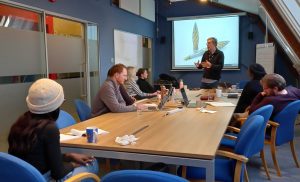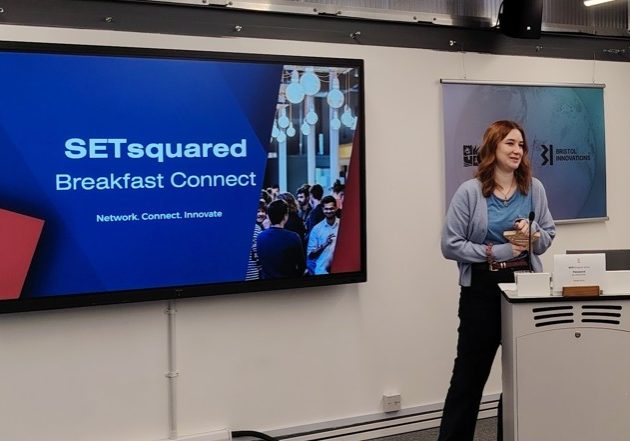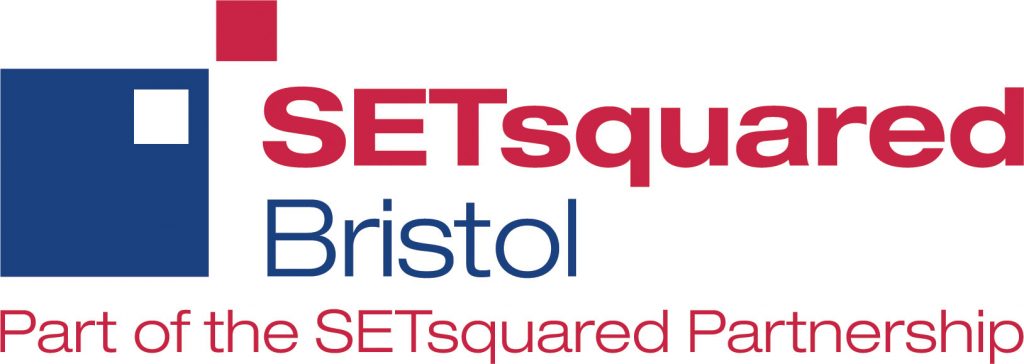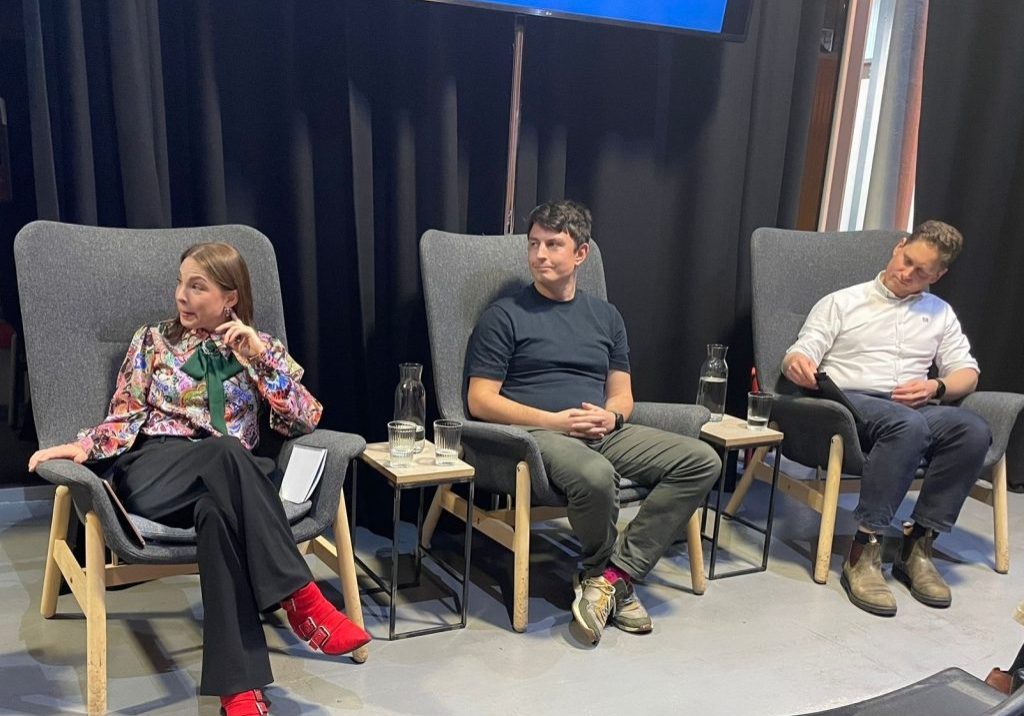Practical sales processes for startups
Posted by
SETsquared Bristol
Our Entrepreneur in Residence, Rick Chapman, leads an annual Practical Sales Processes workshop for tech startups in the SETsquared Bristol community.
 Rick is a serial entrepreneur, Non-Executive Chair of two startups, and Founder of EDI Partners. Through his experience, he has developed a tried and tested process for non-salespeople to achieve results. Here we share our top tips from the session.
Rick is a serial entrepreneur, Non-Executive Chair of two startups, and Founder of EDI Partners. Through his experience, he has developed a tried and tested process for non-salespeople to achieve results. Here we share our top tips from the session.
Sales versus marketing
The purpose of marketing is to work out where your customers are, to engage them and identify their needs, as well as to market the product to customers. Sales is an integral part of the execution of this process and is broken up into three tasks:
- Business development
- Account management
- Closing
Large companies will have people for each, but early startup founders will need to execute them all.
Customer Value Proposition
Your Customer Value Proposition outlines why customers buy your product. The purpose is to focus your business, to underpin your promotions and to ensure consistency. It should include:
- what you’re offering
- who will buy it
- why they need it
- why they should buy yours
Is your product genuinely interesting and better than other options? Prove it with credible and consistent numbers, evidence testimonials and references. And be super-critical… your customers will be!

The sales process – inside the buyer’s mind
During the sales process you’ll need to take the buyer through a number of steps, so it is useful to go on a journey inside the buyer’s mind.
The AIDA model maps the customer journey through:
- Awareness – prospecting and approach, making potential customers aware that your product exists
- Interest – meeting and qualifying, showing proof as to how your product solves their problem
- Desire – presentation/proposal and generating momentum
- Action – feedback/overcoming objections and closing
This is followed by loyalty and advocacy (referrals) to expand your customer base and do further marketing for you.
Sales meetings – validate and persuade
In sales meetings, you’ll need to validate that your solutions will work to drive interest. Ask questions to understand whether potential customers have a need/pain that your solution takes away. Persuade them that your solution will solve their need, but don’t push, instead provide information with a purpose.
Opening:
The first job in a meeting is for you to relax and build rapport with potential customers by making conversational introductions. Establish a trustworthy relationship and understand the scope of the project. Make sure you listen, go at their speed and give them some space, stopping when the time is right.
Digging:
You’ll then need to start discovering their detailed needs and problems. Dig for more understanding and ask high-value questions to shape/position your solution. “So, what’s the scope of your project” “What are the main challenges?” “What would good look like?” Listen and read their reactions. Never interrupt and always use care if contradicting, “maybe I’m wrong but…”.
Give them a positive way to frame their problem. You can speculate and suggest, which is where you can start to bring in your solution, personalising your pitch to their needs.
End with a conclusion:
At the end of a meeting, the most important things to agree are actions and timelines, especially the next meeting date. State the positive aspects, be polite and thank sincerely. You can also save a couple of questions for the end in a slightly different environment, “how many other companies am I in competition with?”.
Afterwards, report back, update colleagues and work out your actions. Send a brief follow-up email with thanks to the customer, notes, actions and dates for next steps.
Key to all of this is to remember it’s a process – you are very unlikely to close a big deal in a first meeting. Don’t push too hard – let the process work.
Discovering and handling objections – “Yeah, but…”
You will always get objections; the key is how you handle them.
Clarify and acknowledge the objection and address/reposition it with a new tactic, then check with the customer if it addresses the problem. This way you may diffuse the objection but may be presented with a new one.
Always relate replies to their challenges as to how your solution helps them – focus on the top features and benefits, especially where you’re unique/the best. Show your credentials and occasionally remind them why your solution is less risky than others and the choice made by smart people. If you’re an early-stage business, you may need to lean on external evidence and someone else’s credibility.
When countered with “How much??!!”, your answer depends on their state of mind. If they’re open you can restate what they’re getting, the benefits and the credentials… then the price. Focus on value and benefits before pricing.

Qualifying leads
It’s important to qualify your leads into categories:
- Mobilisers – help drive the deal
- Talkers – provide useful information but are not driving action
- Blockers – are tied to the status quo, showing little interest in new solutions – avoid!
Work out which categories of people you are dealing with and how much time it’s worth spending on them. Ask yourself: are they asking difficult questions? Are they giving you anything back? Are they painting a picture of where you could go together? If someone isn’t engaging, they’re probably a blocker. Mobilisers are the people to spend time with. Try and connect through less useful people to the people who will genuinely help you sell into their organisation.
Use a sales framework to qualify which leads to pursue. A good framework will allow you to evaluate all the information you uncover. For example:
- Budget – Does this customer (or person) have enough money?
- Authority – Does this person have the authority to sign an order?
- Differentiation – Is our offer sufficiently differentiated from competitors?
- Timing – Is their timescale right for us?
- And more
Rank which are the most valuable leads to chase (the most likely to become customers) or to disqualify early, rather than qualifying them in. It doesn’t mean you forget about them, but you know the time isn’t right to pursue them now. Importantly, always check red flags early on such as whether the company is able to buy from a startup.
Generate and maintain momentum. Remember it’s all about them, not you. Ask questions to complete your framework view over a number of meetings, as well as keeping in mind where they are on the AIDA path.
And don’t give up – 80% of sales are made after at least five points of contact, but only 15% of sales people make three or more attempts!
Closing the deal
This should now be a formality as you now know what the client wants. There are many closing techniques, each with various strengths and weaknesses:
- The Direct close: “Can you give me an order number now, I’ll email the contract for you to sign” – it’s the simplest if you’ve got a good relationship, but is often used too early
- The Indirect close: “do these terms look good, have I addressed all of these points?”
- The Assumptive close: “how would you like it delivered, would you like it in black or red?”
- The Negative Assumption close: “Is there anything about the product you’re still unsure of?” – it can be better to use this rather than rushing to a direct close
- And many more
Plus, there’s consultative selling which is working with the client to specify what they buy, or offering the perfect bespoke solution (sorry no discounts!).
In summary, make sure you embed your Customer Value Proposition (your benefits vs their needs) in your pitch. Make sure it’s simple, compelling, differentiated and substantiated.
Always look for new leads, qualify your prospects and chase the right leads based upon a qualification framework. Listen, establish rapport and use your meeting plan. Keep up momentum, but don’t overdo it.
And remember, “winning is built on a robust diet of defeat”.
EiR sessions with Rick are part of SETsquared Bristol membership. Find out about joining us.
Recent News, Blogs and Stories



